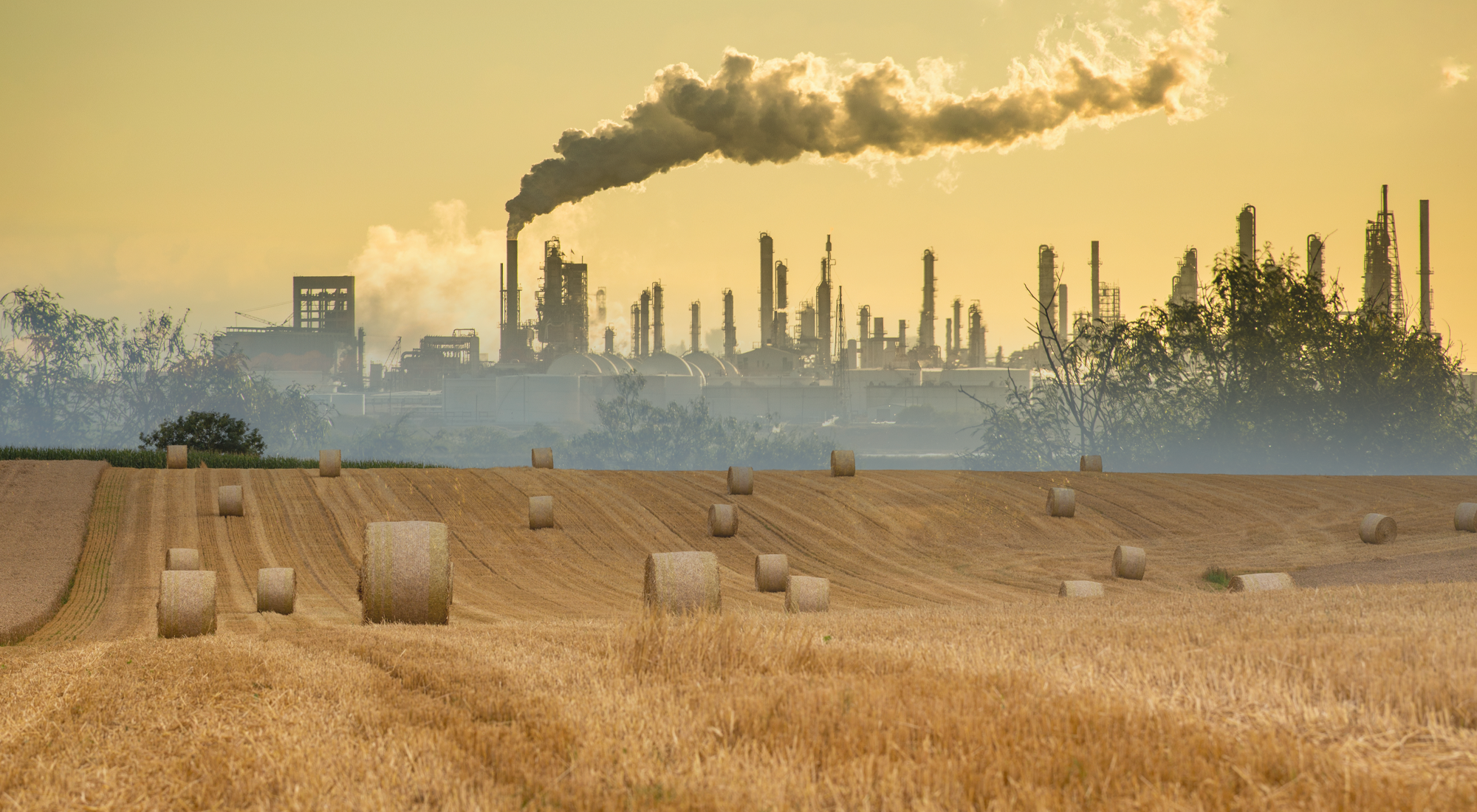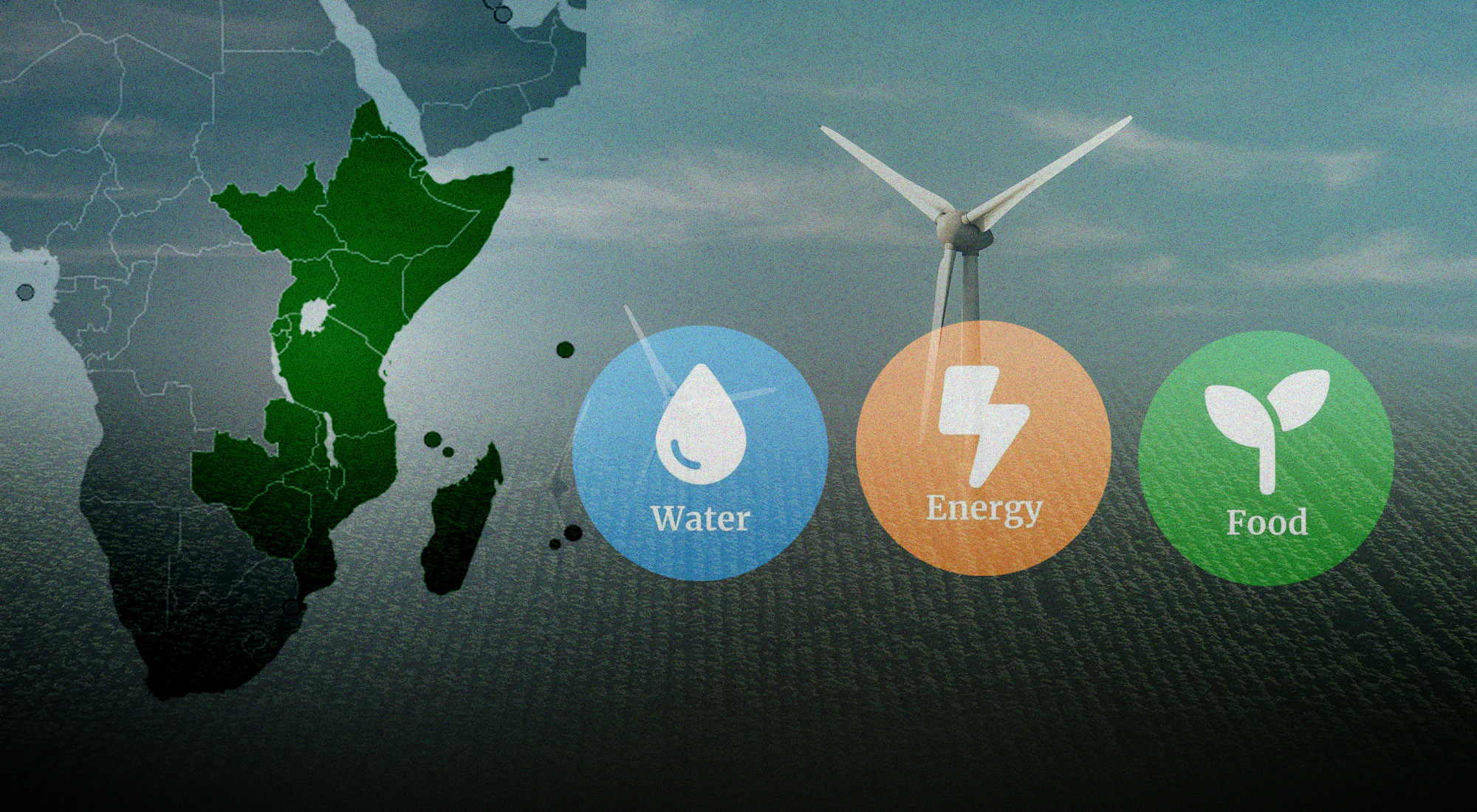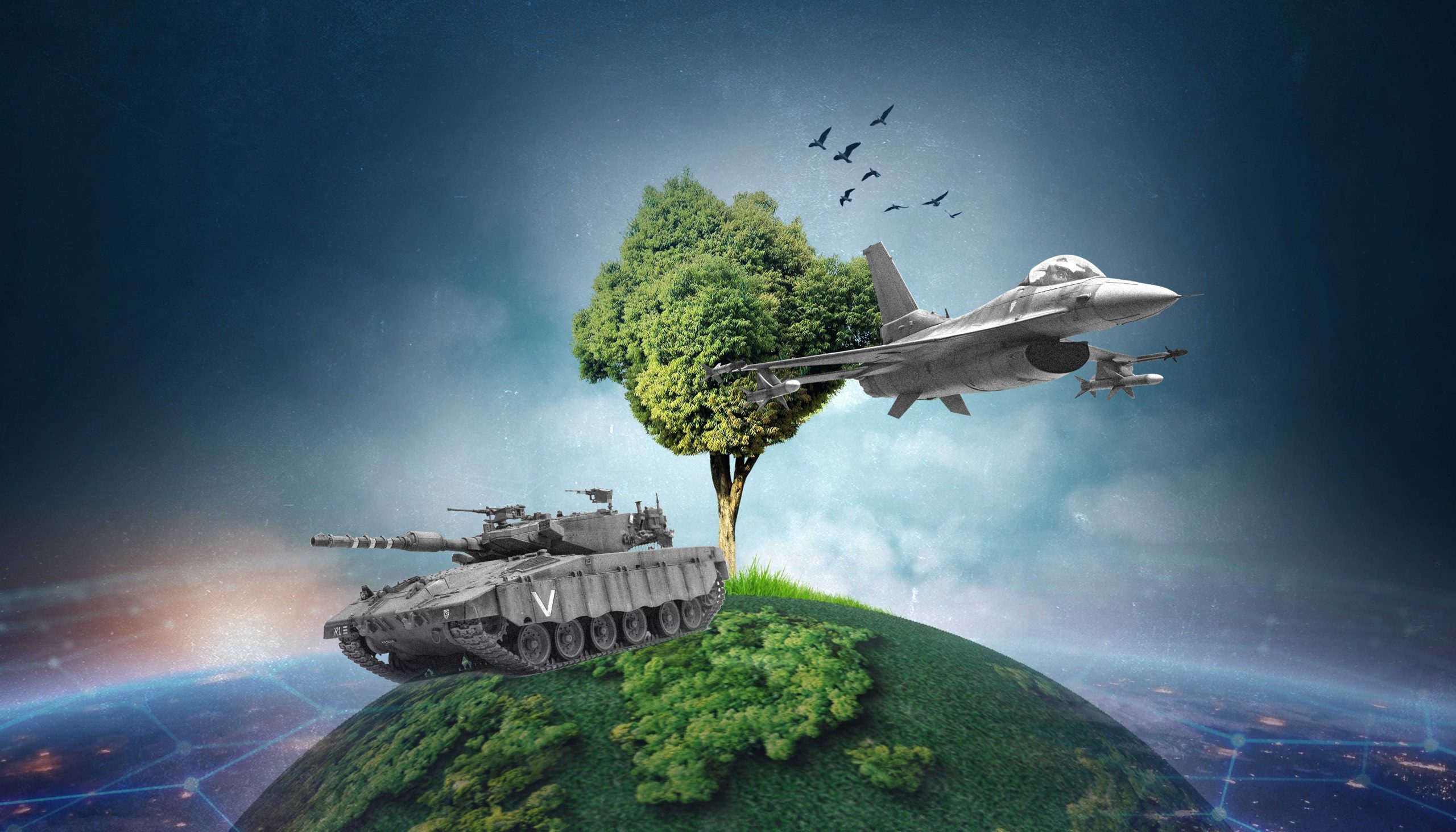Our planet is still testing our ability to resist and meet its critical challenges. Among all that our world is witnessing and all the progress that has been made on global issues, there is still much that we need to do about the challenges of climate change. In order to achieve an optimal balance and overcome challenges, strong international support and cooperation is required.
If we start talking about climate change, we will see that it represents a serious threat to global food security, sustainable development, and efforts to eradicate poverty. It is a critical issue as we live in a time of shifting weather patterns that lead to rising sea levels and increasing risks of catastrophic floods, which in turn threaten the production of our food.
Climate change is unmistakable and its impact is becoming increasingly visible. The Intergovernmental Panel on Climate Change (IPCC) confirmed in its fifth report that the global temperature is on the rise and is expected to increase from 2.6°C to 4.8°C by the year 2100.[1] As temperatures rise, sea levels increase as a result of thermal expansion, melting glaciers and loss of Antarctica’s ice sheets, which in turn lead to devasting consequences such as flooding, erosion, soil contamination as well as more extreme weather conditions. Climate change also poses a threat to the world’s agricultural food production, and may potentially harm crops, reduce yields and cause an increase in global food prices. This threat also extends to marine fish catch potential in the tropics, which is projected to decrease by 40%.[2]
Pillars of food security
Undoubtedly, climate change will be accompanied by changes in the rainfall rates and changes in the emergence and spread of agricultural diseases and pests, negatively affecting the four pillars of food security: availability, access, utilization, and stability. Many studies focus solely on the pillar of availability when reviewing the potential impacts of climate change on food security, and thus may not provide us with a comprehensive picture of other interactions with food systems. Therefore, it is necessary to address all four pillars when talking about the impact of climate change on the food system.[3]
The first pillar of food security refers to the availability of adequate food, i.e., the overall capacity of agricultural systems to meet the demand for food. Its sub-dimensions relating to agroclimatic agriculture include crop and pasture production as well as the set of social, economic, and cultural factors that determine where and how farmers perform and respond to markets. The second pillar relates to individuals having access to sufficient resources to obtain foods suitable for a nutritious diet, which is primarily dependent on the purchasing power of consumers and food prices – though these resources need not be exclusively monetary. The third pillar, utilization, involves meeting dietary requirements as well as food safety and quality to ensure good health and well-being. The last pillar, stability, relates to the exposure of individuals to a significant risk of losing, temporarily or permanently, access to the resources needed to obtain adequate food. Climate variability is one factor that can affect the stability of access to food.
Reports indicate that the number of people facing hunger has increased over the past few years. Today, 1 in 9 people go hungry in the world every day and are undernourished as a result.[4] The problem is not that we do not produce enough food. There are several million farmers around the world, not to mention that there is more caloric production than is necessary to feed everyone in the world. But there are still around 800 million hungry people around the world, either because they do not have enough money to buy food or cannot grow their own food. According to an IPCC report, an estimated 821 million people are currently suffering from malnutrition, about 151 million children under the age of five are stunted, around 613 million women and girls aged 15-49 suffer from iron deficiency, and at least 2 billion adults are either overweight or obese.[5]
International research centres and institutions have carried out several studies to closely examine this phenomenon and to clarify the extent of the impact of floods and rising temperatures on food supplies. Oxfam, a charitable organization focusing on the alleviation of global poverty, conducted a study on the potential effects of climate change on food prices between 2010 and 2030. The report concluded that the price of corn crops could increase by 177%, wheat by 120%, and rice by 107%, taking into account inflation rates.[6] Global crop and economic models have also projected a 1-29% increase in cereal prices in 2050 due to climate change, which will affect consumers globally through higher food prices.[7] Regional impacts will vary. Low-income consumers are particularly at risk, with models indicating increases of up to 183 million additional people at risk of starvation.
Climate change and its impact on food production
Climate change affects agriculture and food production in direct and indirect ways. It directly affects food production through changes in agro-environmental conditions and indirectly by affecting the growth and distribution of income, and thus the demand for agricultural products. Continuing emissions of greenhouse gases lead to changes in temperature and precipitation and thus will have an impact on agricultural patterns. A rise in the global average temperature could bring benefits to agriculture as potentially suitable areas for cultivation will expand and the growth period will increase, which in turn will lead to an increase in crop production. The increased heat in some humid and temperate grasslands may also increase pasture productivity and reduce the need for compound feed. It must be taken into account, however, that these gains would be offset by unstable weather conditions, notably an increase in the frequency of extreme phenomena such as heat waves and droughts in the Mediterranean region or an increase in heavy rains, storms, and floods in more temperate regions.
In contrast, pastures in semi-arid and arid regions are likely to experience reduced livestock productivity and increased livestock mortality. Most of these lands are located in sub-Saharan Africa and parts of southern Asia. In drier regions, climate models predict increased evaporation and decreased soil moisture levels. As a result, some cultivated areas may become unsuitable for agriculture and some tropical grasslands may become increasingly barren. Rising temperature will also expand the range of many agricultural pests and increase the ability of pest populations to survive the winter and attack spring crops.
Another important change for agriculture is the increase in carbon dioxide concentrations in the atmosphere. Higher carbon dioxide concentrations boost crop yields. However, this effect depends on the type of crop and good management of irrigation and fertilization. Under optimal conditions, crop yields increase by 10-20% at 550 ppm CO2 for crops such as wheat, rice, and soybeans, and 0-10% for corn and sorghum crops.[8]
However, the nutritional quality of agricultural products may not increase in line with higher yields. Some cereal and forage crops, for example, show low protein concentrations under elevated CO2 conditions. When grown at 546-586 ppm CO2, the protein content of wheat decreases by 5.9-12.7%, its zinc content by 3.7-6.5%, and iron content by 5.2-7.5%.[9]
Fruits and vegetables, essential components of a healthy diet, are also vulnerable to climate change. A decrease in production and suitability of plant varieties is expected under higher temperatures, especially in tropical and subtropical regions. Heat stress reduces fruit stability and accelerates vegetable ripening, leading to yield losses, deterioration in product quality, and increased loss of food and waste. Climate change could also potentially cause a change in the distribution of pests and diseases, negatively affecting production in many areas. New plant pests that did not exist in the past could emerge, and existing pests and diseases could spread through agricultural areas, and from one country to another, threatening crop production.
Scientific research and bridging the gap
Supporting and promoting research and development is essential in order to plan for the future and develop solutions to the challenges with which we may be faced. In drawing up their plans and decisions, developed countries depend on the availability of research data based on scientific foundations. A periodic report issued by the Food and Agriculture Organization of the United Nations (FAO) puts forward a number of recommendations in this context, which includes pumping additional investments into agricultural research with a focus on climate change, agricultural expansion, adoption of new irrigation techniques and the development of agricultural infrastructure.[10] We note here the importance of providing more accurate data on climate fluctuations and seasonal climate forecasts, which will undoubtedly help in optimal planning for agriculture and production, thus avoiding endangering agricultural crops.
One study used computer models to analyze the possibility of increasing global production while reducing production inputs from water, fertilizers, and seeds. The results of the study indicate that the production of 17 of the most important food commodities could be increased by 45-70% if the gap between current production and desired production is closed.[11] Note that computer models analyze all important data related to production, including the prices of production inputs such as seeds, fertilizers and agricultural equipment, while taking into account the annual temperature rates for hundreds of years, and then developing a future vision for production costs and commodity prices.
The next stage involves research studies focusing on promoting sustainable agricultural practices and the use of technological progress to reduce the impact of climate change. It is important to develop scenarios for what may accompany these changes. From the point of view of food security, studying the extent of the impact of climate change on agricultural cover and the diversity of crops grown in different areas is essential in order to be able to extrapolate the upcoming changes and prepare for new strategies that may change our view of the issue of water scarcity and the abundance of agricultural commodities.
It is important to utilize smart technologies in both food production and weather forecasting. For example, a water-conserving machine developed in Egypt cuts water consumption by half in rice crop cultivation. Crop varieties have also been developed that are tolerant of salinity and drought, resistant to disease, consume less water and give high yields. Experts in Zambia are making use of automated weather stations installed on mobile phone towers, which provide real-time weather forecasts and agricultural guidance. Agrometeorological information is transmitted through community radio and SMS as well as public meetings in dozens of local languages, making actionable information accessible to vulnerable farmers. Almost 90% of the least developed countries and small developing countries considered early warning systems as a top priority in developing scenarios for climate change.
Finally, changes on the ground needed to adapt to climate change to ensure food security will require investments, policies, and efforts by institutions in various fields and in partnership with the private sector. Integrated strategies and plans must be developed and in a manner that is transparent and considers the different social, economic, and environmental dimensions and the different timescales needed to implement and support changes. These strategies and plans should be based on assessments of risks and vulnerabilities, benefit from experiences and progress made in other countries, and be regularly monitored, evaluated and updated. Middle- and high-income countries are increasingly undertaking regular assessments, but countries that lack this capacity will need special support from the international community. For example, the National Adaptation Plan on Climate Change, developed under the United Nations Framework Convention, provides the opportunity to integrate food security and nutrition as a major objective. It is important to support these national strategies and plans by strengthening regional and international cooperation.
Climate change will affect all four pillars of food security: availability, access, stability, and utilization. The importance of these pillars and the overall impact of climate change on food security will vary across geographic regions and over time. More importantly, the outcome will depend on the actions taken by countries to mitigate the effects of climate change. Most scenarios show that climate change will have a negative impact on food security and increase the dependence of developing countries on imports.
The world needs to act now to both end hunger and enable agricultural sectors to adapt to climate change. This is vital if we are to minimize the detrimental effects of climate change and ensure food security and adequate nutrition for all.
References
[1] Thomas F. Stocker, Dahe Qin, Gian-Kasper Plattner et. al., ed., Climate Change 2013: The Physical Science Basis, Working Group I Contribution to the Fifth Assessment Report of the Intergovernmental Panel on Climate Change, IPCC, 2013, https://www.ipcc.ch/site/assets/uploads/2018/02/WG1AR5_all_final.pdf.
[2] Food and Agriculture Organization of the United Nations (FAO), Climate Change and Food Security: Risks and Responses, 2015, https://www.fao.org/3/i5188e/I5188E.pdf.
[3] Josef Schmidhuber and Francesco N. Tubiello, “Global Food Security under Climate Change,” Proceedings of the National Academy of Sciences of the United States of America 104, no. 50, https://www.pnas.org/doi/full/10.1073/pnas.0701976104.
[4] World Food Program (WFP), “2019 – Hunger Map,” August 14, 2019, https://www.wfp.org/publications/2019-hunger-map.
[5] Fahmuddin Agus, Almut Arneth, Paulo Artaxo et. al., “Technical Report: Food Security,” in Climate Change and Land: An IPCC Special Report on Climate Change, Desertification, Land Degradation, Sustainable Land Management, Food Security, and Greenhouse Gas Fluxes in Terrestrial Ecosystems, ed. Priyadarshi R. Shukla, Jim Skea, Raphael Slade et. al., Intergovernmental Panel on Climate Change (IPCC), 2019, https://www.ipcc.ch/site/assets/uploads/sites/4/2020/07/03_Technical-Summary-TS_V2.pdf.
[6] Oxfam, Extreme Weather, Extreme Prices: The Costs of Feeding a Warming World, Oxfam Issue Briefing, September 2012, https://bit.ly/3oiC8ZU.
[7] Agus et. al., “Technical Report: Food Security.”
[8] Climate Change 2007: Impacts, Adaptation and Vulnerability, Contribution of Working Group II to the Fourth Assessment Report of the IPCC, 2007, https://www.ipcc.ch/site/assets/uploads/2018/03/ar4_wg2_full_report.pdf.
[9] Agus et. al., “Technical Report: Food Security.”
[10] Food and Agriculture Organization of the United Nations (FAO), The future of Food and Agriculture: Alternative Pathways to 2050, 2018, https://www.fao.org/3/I8429EN/i8429en.pdf.
[11] Nathaniel D. Mueller, James S. Gerber, Matt Johnston et. al., “Closing Yield Gaps through Nutrient and Water Management,” Nature 490, August 2012, https://doi.org/10.1038/nature11420.








